#white label telehealth
Explore tagged Tumblr posts
Text
White-Label Telemedicine Platform: A Complete Overview
A White-Label Telemedicine platform is a tool that lets you talk to a doctor online instead of visiting their clinic. Telemedicine is the future of healthcare. It lets patients talk to doctors quickly and conveniently.
Even before the pandemic, the telehealth market was expected to be worth money by 2027. But now, lots more people want to use telemedicine. It’s a way to talk to a doctor without leaving your house. That’s why telemedicine services platforms are becoming popular and making lots of money.
Many hospitals and healthcare groups are thinking of adding telemedicine to their services. Doing this now is easier because technology is better and equipment is more available. If you want to create your telemedicine platform, you can use a White Label Telemedicine platform. It’s an easy way to get your platform up and running quickly!
What is a White-Label Telemedicine Platform?
The telemedicine platform is a portal you can create to provide healthcare to patients via the Internet. It allows healthcare professionals to assess, diagnose and treat patients using telemedicine technologies remotely.
Now you can build it from scratch or use a white label telemedicine app development solution. With the help of a white-label telemedicine platform, you can customize, rebrand, and resell as per your requirements. A white label healthcare app offers not one but several advantages over a custom telemedicine application.
Original Blog Source: https://www.vcdoctor.com/blog/white-label-telemedicine-platform
#white label telemedicine#white label telehealth#white label telemedicine app#white label telemedicine platform#white label telehealth platform#white label healthcare#telemedicine white label#white label hipaa software solution#vcdoctor
0 notes
Text
Sehet White Label Telemedicine Solution allows healthcare providers to customize their own telehealth platform with their branding, offering Audio/video consultations, pre-appointment for physical consultation, E-clinic Panel, OPD/IPD management, Pharma & Laboratory Management, and more.
Our White-label telemedicine solution is one of the platforms that enables healthcare providers to broaden their services beyond traditional boundaries. By engaging with Sehet Health Connect, doctors can offer several advantages to their patients including Audio/Video Consultation, Remote Patient Monitoring, and more, all under their brand. This initiates healthcare providers to reach more patients in remote areas or underserved areas, and provide ease of care for busy individuals, leading to reduction of burden on your physical facilities. Now, with Sehet, you can offer seamless and integrated patient care experiences to improve patient satisfaction and loyalty. Our solution is designed to be user-friendly, ensuring that our doctors and patients can easily adopt and get benefits from it.
Read More: https://sehet.in/white-label-telemedicine-solution

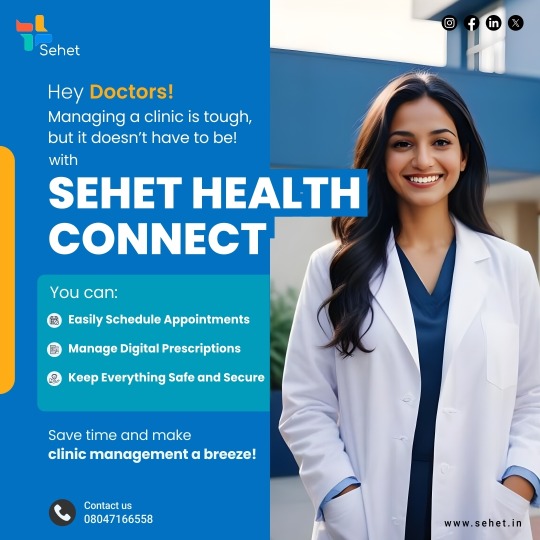
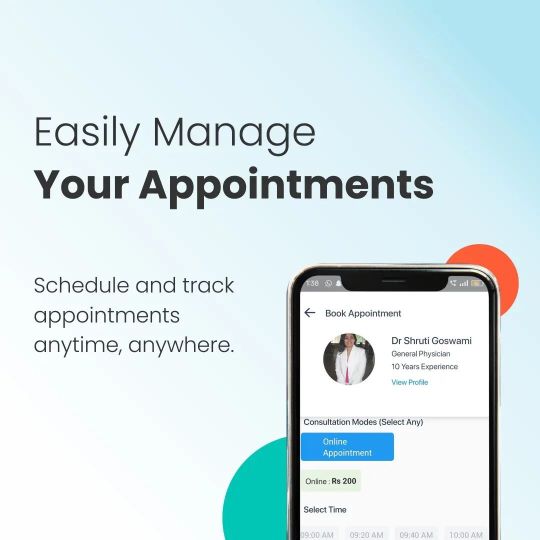
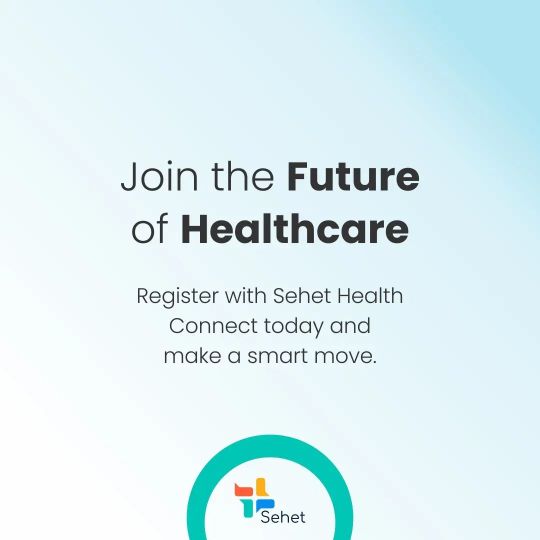


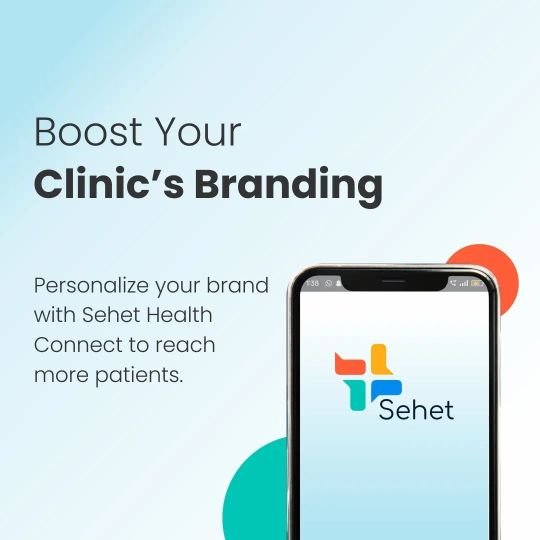
#sehet#white label telemedicine solution for hospitals and doctors#customizable telehealth platform#patient management#healthcare providers#clinic telehealth solutions#hospital telehealth services
0 notes
Text
How Hipaa influence healthcare industry with privacy and security | Teledocto Let’s derive how HIPAA impacted the healthcare industry with its regulation about data and information of patience and insurance holder with zero tolerance on fraudulent. HIPAA secures patient activity, ensuring compliance, and fostering trust in the ever-evolving healthcare ecosystem.
#Telemedicine solution#telehealth services#white labelled telemedicine solutions#teledocto#Hipaa#hipaa in healthcare
0 notes
Text
How a White Label Online Video Platform Can Benefit Your Business
In today's digital landscape, connecting with your audience is not just a task; it's an art. And guess what? We've found the perfect brushstroke to add to your canvas: White Label Video Consultation Solutions.
White-label video platforms have gained popularity for hosting virtual events, webinars, and online conferences. The healthcare sector has seen a surge in adopting white-label video platforms for telehealth services.
Moreover, collaboration tools, such as screen sharing and document editing within video sessions, have become integral to many white-label platforms.
Sounds fancy, right? Don't worry; it's not as complex as it sounds.
A White Label Online Video Platform, is all about your brand story, your style, and your goals. It's like having a digital blockbuster that showcases your products, services, or anything else you want to shout from the virtual rooftops.
It's not just about slapping your logo on a video; it's a strategic move that can turbocharge your brand presence, engagement, and even revenue.
In this blog, we'll dive into the nitty-gritty of White Label Video Consultation Solutions. We'll explore how it works and why your business needs it; let's get started!
How White Label Online Video Platforms Work
At its core, White Label Video Platforms leverage a robust infrastructure that handles the complexities of various video interactions.
Whether you're engaging in video conferencing, live streaming, or hosting webinars, the underlying technology is all about the efficient transmission of video data.
This involves secure channels and cutting-edge codecs to ensure that the visuals and audio maintain a high standard.
Cloud-Based Scalability
The cloud is the unsung hero here, providing the scalability and accessibility that modern video experiences demand. White Label Platforms leverage cloud-based solutions, liberating us from the limitations of physical servers.
This setup allows the platform to scale dynamically, adapting to user demand seamlessly. The days of being shackled by server constraints are over.
Security
Security is not an afterthought—it's a priority. White Label Solutions integrate end-to-end encryption to safeguard your video data from the prying eyes of the digital world.
Access controls add an extra layer of defense, determining who gets entry to your virtual domain. Secure data storage ensures that your valuable video interactions are stored away from unauthorized access, providing a digital fortress for your sensitive discussions.
Customization Options
Now, let's talk about injecting your brand's DNA into the platform. White Label Solutions offer practical customization options. This includes integrating your logo, choosing color schemes that align with your brand identity, and personalizing meeting URLs.
It's not about making it look good; it's about ensuring that your virtual space resonates with your brand without unnecessary embellishments.
API Integrations
White Label Platforms often allow API integrations for those craving more technical control. This means you can embed video functionality directly into your existing applications or website.
The result? A seamless integration that ensures a consistent brand experience across various digital touchpoints. It's about leveraging technology to reinforce brand recognition and loyalty.
Key Benefits of A White-Label Video Platform for Your Business
Let's dive into how this dynamic tool can be a game-changer for your business.
Cost-Effective and Time-Saving
Building a video platform from scratch is a resource-intensive endeavor. It involves hiring skilled developers, investing in infrastructure, and navigating the complexities of coding and testing.
A white-label online video platform provides a ready-made solution, eliminating the need for extensive development. This, in turn, translates to significant cost savings, allowing businesses to allocate resources more efficiently.
Reduced Time to Market
Time is a precious commodity in the digital landscape. Developing a video platform from the ground up can take months, if not years, before it's ready for deployment. White-label solutions offer a shortcut to market.
By leveraging a pre-built platform, businesses can drastically reduce their time to market, ensuring that their video content is swiftly available to the audience. This agility is a strategic advantage in a fast-paced digital world.
Streamlined Maintenance and Updates
Maintaining and updating a custom video platform requires ongoing effort and resources. With a white-label solution, the maintenance burden is transferred to the platform provider.
This reduces the workload on your internal team and ensures that your video platform remains up-to-date with the latest features and security patches. It's a hands-off approach to maintenance, allowing your team to focus on core business activities.
Predictable Cost Structure
Budgeting is a critical aspect of business planning. White-label online video platforms often come with a predictable cost structure.
Whether through licensing fees or subscription models, businesses can anticipate and plan for their video platform expenses.
This predictability enhances financial control, allowing businesses to allocate funds strategically and avoid unforeseen development costs.
Flexibility in Meeting Demand
Growing businesses often experience an increasing demand for consultations and personalized interactions.
A white-label video consultation solution provides the flexibility to seamlessly scale up and meet the rising demand.
Whether it's accommodating a surge in client consultations or expanding the scope of virtual meetings, the platform can adapt to varying levels of market.
Adaptable Infrastructure for Diverse Services
As your business diversifies its service offerings, a white-label video consultation solution offers an adaptable infrastructure.
Whether you're providing medical consultations, professional advice, or educational services, the platform can scale its capabilities to suit the specific requirements of each service.
This adaptability ensures that a robust and versatile video consultation solution supports your growing portfolio of offerings.
Scalable User Access and Licensing
With business growth comes an expanding user base. White-label solutions often offer scalable user access and licensing options.
This means that as your business clientele grows, the platform can accommodate more users without compromising on performance.
Scalable licensing models also provide cost-effective solutions, allowing businesses to align expenses with the pace of their growth.
Integration with Existing Systems
Growing businesses often have an existing ecosystem of tools and systems. A white-label video consultation solution can seamlessly integrate with your current infrastructure.
Whether it's connecting with customer relationship management (CRM) systems, appointment scheduling tools, or electronic health records (EHR) platforms, the solution can scale without disrupting your existing workflows.
Brand Consistency and Recognition
In the ever-evolving landscape of digital content, maintaining a cohesive brand image is paramount for businesses striving to leave a lasting impression on their audience. One powerful tool that facilitates this mission is a white-label video platform.
A white-label video platform allows you to seamlessly integrate your brand elements into the video player interface. From color schemes to logos and fonts, every facet of the player can be tailored to mirror your brand's aesthetic.
This unified visual experience across all your video content enhances brand recall and fosters a sense of familiarity among your audience.
API Integration for Seamless Branding
White-label solutions often provide robust Application Programming Interface (API) integration capabilities.
This means that your existing systems, such as websites or mobile apps, can seamlessly communicate with the video platform.
This technical synergy ensures that the branding elements are consistently portrayed across all channels, reinforcing your brand identity.
Intuitive User Interface
A white-label video platform enables you to design an intuitive, user-friendly interface that aligns seamlessly with your brand's tone.
Consistency in user experience fosters a sense of reliability and professionalism, contributing to the overall recognition of your brand as one that prioritizes a polished and cohesive online presence.
Cross-Platform Branding
Whether your audience engages with your content on a desktop, tablet, or mobile device, a white-label video platform ensures a consistent brand experience across all platforms.
This cross-platform uniformity reinforces your brand's image, making it easily recognizable regardless of the device used.
Future Trend: AI-enhanced White Label Video Platform
In the ever-evolving landscape of digital communication, the integration of Artificial Intelligence (AI) into white-label video platforms brings forth a myriad of advantages.
Let's explore the key benefits that propel these AI-enhanced solutions to the forefront of modern business communication.
Contextual Analysis for Dynamic Interactions
In the realm of online video consultations, the integration of Artificial Intelligence (AI) introduces a powerful ally—contextual assistance.
This innovative feature elevates the consultation experience by providing real-time support and intelligence during interactions.
AI algorithms continuously analyze ongoing conversations in real-time. By understanding the context, AI gains insights into the user's queries, concerns, and objectives.
Moreover, contextual assistance enables AI to retrieve relevant information on the fly. Users receive instant access to pertinent details, enhancing the immediacy and accuracy of responses.
AI identifies and addresses common queries by providing concise and accurate answers. This feature streamlines the consultation process, allowing users to quickly access essential information.
As the conversation evolves, AI offers intelligent suggestions. These suggestions could range from relevant resources to additional services, enhancing the overall value of the consultation.
Recommendations for Personalized Engagement
Imagine you are looking for expert advice, and suddenly, your screen lights up with tailored suggestions. That's the beauty of smart recommendations in an AI-powered video platform.
This tech whiz analyzes your needs, considers the unique skills and experiences of available agents, and then, like a matchmaker of expertise, suggests the perfect professional for your video appointment.
It's not just about booking any agent; it's about connecting you with someone who understands your specific requirements.
AI turns the process of finding the right expert into a breeze, making your video appointments not just efficient but perfectly tailored to your needs.
Automatic Call Summaries for Post-Consultation Insights
The integration of AI into video platforms introduces a groundbreaking feature: automatic call summaries. This technological marvel is not just about convenience; it's a strategic approach to optimizing time and resources.
The AI employs advanced machine learning algorithms to meticulously analyze video recordings, extract crucial details, and generate concise summaries.
Technically speaking, natural language processing algorithms delve into the conversation, identifying key action points and significant discussion topics.
This isn't just a summary; it's a detailed extraction of valuable insights from the interaction. The result is a meticulously organized list of action items, ensuring that crucial details are captured efficiently.
Think of it as having a virtual assistant with an unparalleled ability to distill meaningful information from your video calls.
It's a fusion of technology and practicality, where AI empowers you to focus on the substance of your conversations while seamlessly organizing vital post-call details. This isn't just efficiency; it's the future of streamlined and insightful communication.
Personalized User Experiences
AI-enhanced platforms offer personalized user experiences by tailoring interaction spaces, such as private chat rooms.
Customized branding, user-centric suggestions, and adaptable features contribute to an engaging and personalized environment. This level of personalization fosters increased user engagement and satisfaction.
How White Label Online Video Platforms Are Compliant to Data Privacy Regulations
In an era where data privacy and regulatory compliance reign supreme, businesses are tasked with ensuring that their digital solutions adhere to stringent standards.
White-label online video platforms recognize the criticality of healthcare data security under the Health Insurance Portability and Accountability Act (HIPAA).
These platforms are meticulously designed to meet HIPAA compliance standards, ensuring that the transmission and storage of health-related video content adhere rigorously to privacy and security mandates.
By incorporating robust security measures, these platforms empower healthcare providers to engage in video communication confidently within a secure framework.
Also, white-label online video platforms take a global perspective on data protection, purposefully aligning with PIPEDA requirements.
Additionally, these platforms recognize the paramount importance of GDPR compliance, integrating features that uphold data protection principles.
Moreover, white-label video platforms incorporate end-to-end encryption, ensuring that the transmission and storage of video content remains secure.
This technical foundation not only aligns with compliance standards but also instills confidence in businesses that their sensitive information is shielded from unauthorized access.
Access Controls for Data Governance
Granular access controls are a hallmark of compliance-centric white-label video platforms. Businesses can define and manage user permissions, ensuring that only authorized individuals have access to specific video content.
This level of data governance not only facilitates compliance but also provides businesses with the tools to tailor access based controls for their unique regulatory requirements.
Audit Trails for Transparency
White-label video platforms often incorporate audit trail features, allowing businesses to track and document user interactions with video content.
This transparency not only aids in compliance audits but also serves as a proactive measure in demonstrating adherence to regulatory standards.
Regular Updates for Regulatory Changes
The regulatory landscape is dynamic, with updates and changes being the only constants. White-label video platforms, committed to compliance, often provide regular updates to align with evolving regulations.
This proactive approach ensures that businesses can confidently navigate changes in compliance requirements without disrupting their video content strategies.
Wrapping Up!!
In the competitive arena of modern business, being adaptable and responsive to technological advancements is not just an option; it's a necessity.
By integrating white-label video solutions, businesses not only meet the demands of the digital age but also set the stage for sustained growth and success.
The journey toward a more connected and visually compelling future starts with embracing white-label video solutions — a decision that propels your brand into the forefront of the digital revolution.
It's time to seize the opportunities, enhance your brand, and chart a course for a future where communication knows no bounds. Embrace the power of white-label video solutions and redefine the way you connect with your audience.
********
0 notes
Text
Why User-Centric Design Matters in Healthcare Apps
The healthcare industry is evolving rapidly, and the demand for digital solutions, especially mobile apps, has soared in the last few years. As someone involved in healthcare app design, I’ve found that crafting an effective healthcare app involves more than technical prowess. It requires empathy, insight, and a keen understanding of the needs of both patients and healthcare providers.
In this article, I’ll take you through my experience and best practices for designing and developing healthcare apps, backed by relevant data and statistics from industry experts.
Why Build a Healthcare App?
Healthcare apps have the potential to change lives by making healthcare more accessible, affordable, and user-friendly. With over 52% of smartphone users actively engaging with health-related apps, the demand for effective mobile healthcare solutions is indisputable. From remote consultations to chronic disease management, healthcare apps are reshaping how we interact with health information and services.
As we consider developing healthcare apps, it’s crucial to address a broad set of challenges, including data privacy, reliability, and usability—elements that can make or break the user experience in a high-stakes industry.
Step 1: Defining Your Healthcare App’s Purpose
Before diving into design, defining the app’s purpose and identifying your target users is vital. Are you looking to help chronic disease patients manage their condition, or are you aiming for a telehealth app for remote consultations?
The variety of healthcare apps is vast, as Codiant explains, covering areas like fitness and wellness, diagnostics, telemedicine, mental health, and medication management. Each type serves a distinct purpose, so the design and development process should cater to specific user needs and regulatory requirements.
Key Insight: Focus on User Needs
Developing a successful healthcare app means solving real-life challenges for users. According to Appinventiv, user-centric design is non-negotiable. User-centered features such as intuitive navigation, clear prompts, and access to essential information can significantly impact user retention and satisfaction.
Step 2: Ensuring Compliance with Regulations
One of the most critical aspects of healthcare app development in the USA is compliance. Whether you’re creating a white-label healthcare app or a fully customized solution, understanding and adhering to regulatory standards like HIPAA (Health Insurance Portability and Accountability Act) in the U.S. is essential.
The team at Radixweb underscores the importance of prioritizing data security and privacy, especially given that healthcare apps handle sensitive patient information. Non-compliance can lead to hefty fines and, more importantly, a loss of trust among users.
Key Insight: Privacy and Security Are Paramount
From my experience, addressing security from the very start—during the design phase—pays off. Implementing robust security protocols like two-factor authentication, data encryption, and secure user authentication builds user trust and aligns with regulatory requirements.
Step 3: Designing the User Experience (UX)
Designing a healthcare app is all about ease of use, especially for those who may not be tech-savvy. Statistics show that 40% of patients abandon apps due to complex navigation or poor design. Given these figures, designing a straightforward, user-friendly app can directly impact user engagement.
Essential UX Design Elements:
Simplicity: Healthcare users are diverse. Design your app to be intuitive and accessible for all user groups.
Personalization: By incorporating AI-driven recommendations, such as tailored wellness tips or reminders, you can enhance user satisfaction.
Accessibility: Incorporate accessibility features for visually impaired users, including voice commands and scalable text.
In one of my recent projects, adding personalized reminders and a streamlined, visual-based interface increased user retention by nearly 25%.
Step 4: Selecting the Right Technology Stack
Healthcare app development solutions require the right blend of technologies. Codiant highlights the use of mobile health (mHealth) technologies, including cloud storage and machine learning, as effective in handling complex data structures and enabling real-time monitoring.
When choosing a technology stack, consider scalability, security, and integration capabilities. For example, a telemedicine app might benefit from WebRTC for real-time video consultations, while a fitness tracker app could leverage AI to analyze user behavior.
Key Insight: Prioritize Scalability
As your user base grows, your app’s architecture should support this expansion without compromising performance. Building on a cloud infrastructure provides flexibility and can adapt to increasing demand, ensuring the app remains reliable and functional.
Step 5: Development and Testing
Once the design and technology stack are in place, it’s time to move to development. Agile methodologies are highly effective for healthcare app projects, allowing for iterative improvements and faster releases.
Testing is crucial, as healthcare apps require high reliability. Appinventiv advises rigorous testing, especially for functionality, security, and compliance. In my own projects, I often conduct usability testing with real users to gather feedback and make adjustments, as this approach reveals pain points that developers might overlook.
Key Insight: Test with Real Users
Conducting user testing early can prevent costly changes later. By gathering feedback on usability, performance, and even color schemes, you gain insights that directly enhance user satisfaction and engagement.
Step 6: Launch and Ongoing Maintenance
A successful healthcare app requires continuous updates and maintenance. Technology advances, user expectations shift, and regulatory requirements evolve. A well-planned post-launch strategy should include regular updates, feature enhancements, and performance monitoring to keep the app relevant and functional.
Key Insight: Embrace User Feedback
Post-launch, user feedback is invaluable. It’s the clearest lens into areas for improvement, be it app speed, feature enhancement, or additional functionalities. By building a feedback loop, you ensure the app remains responsive to user needs.
Key Trends Shaping Healthcare App Development in the USA
Telemedicine and Remote Care: With a forecasted market size of $559.52 billion by 2027, telemedicine is a significant growth area. Apps that facilitate remote consultations and virtual care are increasingly valuable.
AI and Machine Learning: From diagnostic tools to personalized health recommendations, AI is transforming healthcare apps. Users appreciate features like symptom checkers or personalized health suggestions.
Integration with Wearables: Integrating wearables with healthcare apps enables real-time health monitoring. As wearable use grows, especially for chronic disease management, this trend is shaping the app development landscape.
Conclusion: Making a Meaningful Impact with Healthcare Apps
Designing and developing a healthcare app that resonates with users and stands the test of time is challenging yet fulfilling. From understanding user needs and complying with strict regulations to adopting the right technology stack, every step in the process is vital to delivering a high-quality, reliable product.
As we’ve seen, today’s healthcare app users expect more personalized, intuitive, and secure experiences. And with the healthcare app market in the USA and globally expected to continue growing, now is the perfect time to embark on this journey. Whether you’re considering a white-label healthcare app or a custom solution, remember that every choice—from design to deployment—can significantly impact users’ lives.
By prioritizing user needs, compliance, security, and technology, we’re not just creating apps. We’re building solutions that empower individuals to take control of their health and improve the healthcare system for everyone.
#hire developers#hire app developer#mobile app development#hire mobile app developers#ios app development#android app development#health and wellness#healthcare#healthylifestyle#physical health#health & fitness#mental health#medicine
0 notes
Text
White Label Telehealth Software: The Ultimate Solution for Telehealth Providers

In today's rapidly evolving digital landscape, telehealth is no longer just an option—it’s a necessity. But how do you, as a telehealth provider, ensure that your services stand out in a crowded market? The answer lies in White Label Telehealth Software. This comprehensive guide will delve into how Telehealth Software and Telehealth Solutions can revolutionize your practice and set you on the path to success.
The way we access healthcare has changed dramatically over the past few years. Telehealth software, a digital solution that enables remote healthcare services, has emerged as a powerful tool to meet the growing demand for accessible healthcare. But what exactly is telehealth software, and how can it benefit both providers and patients?

The Basics of Telehealth Software
Telehealth software is a platform that allows healthcare providers to offer services such as consultations, diagnosis, and treatment through digital means. This software leverages the internet and telecommunications technologies to bridge the gap between patients and providers, making healthcare more accessible, especially in remote or underserved areas.
The Evolution of Telehealth
Telehealth is not a new concept. However, its adoption has skyrocketed in recent years due to the COVID-19 pandemic. What was once a niche service has become mainstream, offering a lifeline to those unable to access traditional healthcare settings.
What is White Label Telehealth Software?
Now that we’ve covered the basics, let’s dive into White Label Telehealth Software. Imagine you have a blank canvas. White label software is like that canvas, but it comes with all the intricate designs already in place. You just need to add your unique colors—your brand, your services, and your personal touch.
Defining White Label Telehealth Software
White label telehealth software is a pre-built platform that companies can customize and brand as their own. This means you don’t have to start from scratch. Instead, you can leverage an existing, fully-functional telehealth solution and tailor it to your specific needs.
How It Works
White label solutions allow you to offer a comprehensive telehealth service without the need for extensive development and testing. You simply integrate your branding and features, providing a seamless experience for your users that looks and feels entirely your own.
Why Choose White Label Telehealth Solutions?
You might be wondering, why should I choose a white label solution over developing my own software from scratch? The answer is simple: time, cost, and expertise.
Saving Time and Resources
Developing telehealth software from the ground up can take years and require a significant investment. White label solutions, on the other hand, are ready to go, meaning you can get your service up and running much faster and at a fraction of the cost.
Leveraging Expertise
White label telehealth software is created by experts who understand the nuances of the healthcare industry. By choosing a white label solution, you're tapping into this expertise, ensuring your platform is compliant, secure, and efficient.
Key Features of Telehealth Software
When considering telehealth software, it’s important to look for key features that will make your service effective and user-friendly. Here’s what you should look for:
1. Video Conferencing
The cornerstone of any telehealth platform, high-quality video conferencing allows for real-time consultations between patients and providers.
2. Appointment Scheduling
An integrated scheduling system makes it easy for patients to book appointments and for providers to manage their time effectively.
3. Electronic Health Records (EHR) Integration
Seamless integration with EHR systems ensures that patient information is easily accessible and up-to-date.
4. Prescription Management
Telehealth software should include features that allow providers to prescribe medication digitally and securely.
5. Secure Messaging
Communication is key in healthcare, and secure messaging ensures that sensitive patient information remains confidential.
6. Payment Processing
Offering integrated payment options makes the billing process smooth and hassle-free for both providers and patients.
The Benefits of White Label Telehealth Software
White label telehealth software offers a multitude of benefits that can give your practice a competitive edge.
1. Customization and Branding
With white label software, you have the freedom to customize the platform to reflect your brand identity. This creates a cohesive experience for your users and helps build brand loyalty.
2. Scalability
As your practice grows, your telehealth platform can grow with it. White label solutions are designed to be scalable, so you can easily add new features and services as needed.
3. Cost-Effectiveness
Developing a custom telehealth platform can be prohibitively expensive. White label solutions offer a cost-effective alternative, allowing you to provide a high-quality service without breaking the bank.
4. Speed to Market
With a white label solution, you can launch your telehealth service quickly, allowing you to start serving patients sooner and generate revenue faster.
5. Focus on Core Competencies
By outsourcing the technology side of your business, you can focus on what you do best: providing excellent healthcare services.
How White Label Telehealth Software Can Transform Your Practice
White label telehealth software is more than just a tool—it’s a transformative solution that can take your practice to the next level.
1. Enhanced Patient Engagement
Telehealth platforms make it easier for patients to connect with their providers, leading to increased engagement and better health outcomes.
2. Improved Accessibility
With telehealth, patients no longer need to travel to receive care. This is especially beneficial for those in rural or remote areas, as well as individuals with mobility issues.
3. Greater Flexibility
Telehealth offers both patients and providers greater flexibility in scheduling and conducting appointments, making it easier to fit healthcare into busy lives.
4. Increased Revenue Streams
Offering telehealth services can open up new revenue streams for your practice, such as virtual consultations, remote monitoring, and more.
Telehealth Software vs. Traditional Healthcare Services
It’s worth considering how telehealth software compares to traditional healthcare services. While both have their place, telehealth offers several distinct advantages.
1. Convenience
Telehealth eliminates the need for patients to travel to a physical location, making it a more convenient option for many.
2. Cost Savings
Both patients and providers can save money with telehealth. Patients save on travel costs, while providers can reduce overhead expenses.
3. Accessibility
Telehealth makes it easier for patients in remote areas to access care, breaking down geographical barriers to healthcare.
4. Continuity of Care
Telehealth allows for continuous monitoring and follow-up care, which can lead to better long-term health outcomes.
Choosing the Right White Label Telehealth Software for Your Needs
With so many options available, how do you choose the right white label telehealth software for your practice? Here are some factors to consider:
1. Ease of Use
The platform should be intuitive and user-friendly for both providers and patients.
2. Customization Options
Look for software that offers robust customization options, allowing you to tailor the platform to your specific needs.
3. Compliance and Security
Ensure that the software is compliant with healthcare regulations and offers strong security features to protect patient data.
4. Support and Training
Choose a provider that offers comprehensive support and training to help you get the most out of your telehealth platform.
Implementation and Integration: A Seamless Process
Implementing a new telehealth platform can seem daunting, but with the right approach, it can be a smooth and seamless process.
1. Planning and Preparation
Start by assessing your current needs and resources. This will help you choose the right software and plan for a successful implementation.
2. Integration with Existing Systems
Ensure that the telehealth software you choose can integrate with your existing systems, such as EHR and billing platforms.
3. Training and Support
Provide comprehensive training for your staff to ensure they are comfortable using the new platform. Look for a provider that offers ongoing support to address any issues that arise.
Challenges and Solutions in Adopting Telehealth Software
While telehealth offers many benefits, there are also challenges to consider. Here are some common challenges and how to overcome them:
1. Technical Issues
Technical difficulties can disrupt telehealth services. To minimize these issues, choose a reliable software provider and ensure your internet connection is strong.
2. Patient Adoption
Not all patients are comfortable with telehealth. Educate your patients on the benefits of telehealth and offer support to help them get started.
3. Regulatory Compliance
Navigating healthcare regulations can be complex. Ensure that your telehealth platform is compliant with all relevant laws and regulations.
Future of Telehealth Software and White Label Solutions
The future of telehealth looks bright, with continued growth and innovation on the horizon.
1. Advances in Technology
As technology continues to evolve, telehealth platforms will become even more sophisticated, offering new features and capabilities.
2. Expansion of Services
Expect to see an expansion of telehealth services, including remote monitoring, mental health services, and more.
3. Increased Adoption
As more providers and patients experience the benefits of telehealth, adoption rates will continue to rise, making telehealth a standard part of healthcare delivery.
Case Studies: Success Stories with White Label Telehealth Software
Let’s look at some real-world examples of how white label telehealth software has transformed healthcare practices.
1. Case Study 1: Rural Healthcare Provider
A small rural healthcare provider was struggling to reach patients in remote areas. By adopting white label telehealth software, they were able to expand their services and increase patient engagement, leading to improved health outcomes.
2. Case Study 2: Mental Health Services
A mental health clinic used white label telehealth software to offer virtual counseling sessions. This not only increased accessibility for patients but also allowed the clinic to expand its services and reach a broader audience.
3. Case Study 3: Large Healthcare Network
A large healthcare network integrated white label telehealth software into its existing systems, streamlining operations and improving patient care. The result was a more efficient, patient-centered approach to healthcare.
Conclusion
White Label Telehealth Software is the ultimate solution for telehealth providers looking to offer a personalized, scalable, and cost-effective telehealth service. By choosing a white label solution, you can focus on delivering high-quality care while leaving the technical aspects to the experts. The future of healthcare is digital, and telehealth is at the forefront of this transformation. Are you ready to take your practice to the next level?
FAQs
1. What is White Label Telehealth Software?
White label telehealth software is a pre-built telehealth platform that can be customized and branded as your own, allowing you to offer telehealth services without developing software from scratch.
2. How does Telehealth Software improve patient care?
Telehealth software enhances patient care by providing convenient access to healthcare services, improving patient engagement, and enabling continuous monitoring and follow-up care.
3. Is White Label Telehealth Software secure?
Yes, white label telehealth software is designed to be secure and compliant with healthcare regulations, ensuring that patient data is protected.
4. What are the costs associated with White Label Telehealth Software?
The costs of white label telehealth software vary depending on the provider and the features included. However, it is generally more cost-effective than developing custom software.
5. How can I choose the right Telehealth Solution for my practice?
When choosing a telehealth solution, consider factors such as ease of use, customization options, compliance, security, and the level of support and training offered by the provider.
0 notes
Text
EnableX: The Best Video API Provider for Seamless Integration
EnableX: The Best Video API Provider for Seamless Integration
In the modern digital landscape, real-time communication has become a cornerstone for businesses across various sectors. Whether it’s healthcare, education, customer service, or remote work, the need for reliable and high-quality video communication solutions has never been greater. For developers and businesses seeking to embed these capabilities into their platforms, the right Video API provider can make all the difference. This is where EnableX shines as the best Video API provider, offering seamless integration and top-notch performance that meet diverse business needs.
What is a Video API?
A Video API (Application Programming Interface) allows developers to integrate video communication features such as video conferencing, live streaming, and video recording into their applications, websites, or services. These APIs abstract the complexities of video technology, providing a simplified interface for developers to use without needing to understand the underlying infrastructure.
Choosing the right Video API provider is crucial for ensuring a smooth user experience, scalability, and adaptability to different use cases. Let’s explore why EnableX stands out as the best Video API provider.
Why EnableX?
1. Comprehensive Features
EnableX offers a comprehensive suite of features that cater to a wide range of applications. Whether you’re building a telehealth platform, an online education portal, or a virtual event platform, EnableX has the tools you need. Some of the standout features include:
HD Video and Audio: EnableX ensures high-definition video and crystal-clear audio quality, even in low-bandwidth environments.
Multi-Party Conferencing: Host video conferences with multiple participants seamlessly, ensuring a smooth and interactive experience.
Screen Sharing and Recording: Share screens in real-time and record sessions for future reference, making it ideal for webinars, remote support, and online training.
Interactive Features: Engage users with interactive features like polls, Q&A, and real-time chat.
End-to-End Encryption: Security is paramount, and EnableX provides end-to-end encryption to safeguard your video communications.
2. Seamless Integration
One of the most critical aspects of a Video API is how easily it integrates with existing platforms and services. EnableX excels in this area by providing:
Cross-Platform Support: EnableX Video APIs are compatible with web, mobile, and desktop platforms, ensuring that your users have a consistent experience regardless of the device they are using.
Developer-Friendly Documentation: EnableX offers extensive documentation, sample code, and SDKs (Software Development Kits) for various programming languages, making it easier for developers to integrate and customize video features.
Flexible APIs: The APIs are highly flexible, allowing developers to customize the video experience to match their specific needs and branding requirements.
3. Scalability
As your business grows, your video communication needs will likely evolve. EnableX’s infrastructure is designed to scale effortlessly, handling everything from small group meetings to large virtual events with thousands of participants.
Global Reach: EnableX has a global network of servers, ensuring low-latency connections and high availability, no matter where your users are located.
Elastic Scalability: Automatically scale up or down based on demand, ensuring that your service remains responsive and cost-effective.
4. Customization and Branding
EnableX understands that every business is unique, and therefore offers extensive customization options to help you maintain brand consistency. With EnableX, you can:
White Labeling: Remove all EnableX branding and replace it with your own, giving your users a fully branded experience.
Custom UI/UX: Modify the user interface and user experience to align with your brand’s look and feel.
5. Robust Analytics
Data-driven decision-making is essential in today’s business environment. EnableX provides robust analytics tools that give you insights into user behavior, session quality, and system performance. This data is invaluable for optimizing your video services and enhancing the user experience.
Real-Time Analytics: Monitor video sessions in real-time to ensure optimal performance.
Detailed Reports: Generate detailed reports on usage patterns, participant engagement, and more.
6. Cost-Effective Pricing
EnableX offers flexible pricing models that cater to different business needs. Whether you’re a startup or an enterprise, EnableX’s pricing structure ensures that you only pay for what you use, making it a cost-effective choice for businesses of all sizes.
Pay-As-You-Go: Pay based on usage, with no hidden fees or long-term commitments.
Custom Plans: For businesses with specific needs, EnableX offers custom pricing plans to match your requirements.
Use Cases of EnableX Video APIs
EnableX’s versatility and comprehensive feature set make it suitable for a wide range of applications. Here are some examples:
Telemedicine: EnableX Video APIs are perfect for telemedicine platforms, allowing healthcare providers to conduct virtual consultations with patients securely and efficiently.
Education: Online education platforms can leverage EnableX to conduct live classes, webinars, and group discussions with ease.
Customer Support: Enhance customer support by integrating video chat, enabling face-to-face interaction with customers.
Virtual Events: Host large-scale virtual events with EnableX’s robust infrastructure, ensuring a smooth experience for all participants.
Success Stories
Several businesses have successfully integrated EnableX into their platforms, leading to enhanced user experiences and business growth. For instance:
Healthcare Provider A: By integrating EnableX Video APIs, Healthcare Provider A was able to launch a telemedicine platform that served over 10,000 patients in its first year, with excellent feedback on the video quality and ease of use.
EdTech Company B: EdTech Company B used EnableX to power its online learning platform, resulting in a 50% increase in student engagement thanks to interactive video features like polls and live chat.
In an increasingly digital world, integrating reliable and high-quality video communication into your platform is essential. EnableX stands out as the best Video API provider due to its comprehensive features, seamless integration, scalability, and customization options. Whether you’re a developer looking to enhance your application or a business aiming to improve customer engagement, EnableX offers the tools and support you need to succeed.
To learn more about how EnableX can help you achieve your goals, visit EnableX.io today.
Best Video API Provider
Best Video API Provider
Best Video API Provider
Best Video API Provider
Best Video API Provider
0 notes
Text
Visibly Buys Lensabl: Expanding Its Vision Care Services

Could this be a game-changer for vision care services? Visibly, a pioneering healthcare technology company, has announced the acquisition of Lensabl, renowned for its comprehensive optical e-commerce solutions. This strategic move aims to broaden Visibly's platform, introducing new retail offerings and reinforcing their mission to make vision care more accessible.
A Strategic Acquisition
Visibly’s recent acquisition of Lensabl represents a significant expansion in vision care services. Known for its direct-to-consumer offerings in lens replacement, prescription glasses, and contacts, Lensabl also boasts a burgeoning B2B business. Their proprietary technology enables brands and partners to deliver e-commerce through white-labeled experiences, an asset that will now benefit Visibly's customers. Enhancing Digital Vision Care With this acquisition, Visibly aims to integrate Lensabl’s cutting-edge technology into its telehealth services. This merger not only expands Visibly's retail capabilities but also ensures that quality vision care is both accessible and affordable for all. Brent Rasmussen, Visibly’s CEO, stated, "We are excited about the opportunity to integrate Lensabl’s cutting-edge technology into the Visibly platform as part of our commitment to enhancing access to care through innovative digital solutions."
The Vision of Unified Services
Lensabl’s contribution includes its online store, the "Shop-in-Shop" platform, and the Lensabl+ vision plan. These additions complement Visibly’s existing telehealth services, creating a comprehensive offering for end-consumers. Andy Bilinsky, CEO of Lensabl, expressed his enthusiasm, saying, "By joining forces, our complementary offerings can help their existing customers provide a more comprehensive range of vision services." The Path Forward Visibly, founded in 2012, has been at the forefront of digital vision care solutions, enabling patient choice and expanding provider capacity. This acquisition aligns with Visibly’s vision of a world where technology simplifies the connection between patients and doctors, making all aspects of vision care more convenient and accessible. In Conclusion Visibly's acquisition of Lensabl marks a significant milestone in the evolution of digital vision care services. By integrating advanced optical e-commerce capabilities and expanding their telehealth offerings, Visibly is poised to enhance the accessibility and affordability of vision care. This strategic move not only benefits existing customers but also positions Visibly as a leader in the digital transformation of the optical industry.
At a Glance
Feature Details Acquisition Date May 23, 2024 Companies Involved Visibly, Lensabl Key Technologies Optical e-commerce, telehealth services, proprietary technology New Offerings Shop-in-Shop platform, Lensabl+ vision plan, expanded retail capabilities Primary Goals Enhance accessibility, integrate advanced technology, expand vision care services Sources: THX News & Visibly. Read the full article
#accessiblevisioncare#digitalvisioncare#Lensablacquisition#Lensablplatform#modernvisionplans#opticale-commerce#prescriptionglassesonline#telehealthservices#Visiblyacquisition#visiontechnology
0 notes
Text
How White Label Voice Calling SDKs Are Revolutionizing Communication Apps
How White Label Voice Calling SDKs Are Revolutionizing Communication Apps
Introduction:
In the fast-paced world of digital communication, businesses and developers are constantly seeking innovative solutions to enhance user experience. One such technology that has gained prominence is the white label voice calling sdk. This powerful tool empowers developers to integrate high-quality voice calling features into their applications seamlessly. In this article, we will delve into the concept of White Label Voice Calling SDKs, exploring their benefits, use cases, and the impact they can have on user engagement.
Understanding White Label Voice Calling SDK:
A voice calling sdk services (Software Development Kit) is a pre-built package of tools, libraries, and resources that enables developers to add voice calling functionality to their applications without having to build the entire infrastructure from scratch. The term "white label" implies that the SDK is customizable, allowing developers to brand the solution with their own logo, design, and specifications.
Key Features and Benefits:
Voice call api android are designed for easy integration, significantly reducing development time. With pre-built components and APIs, developers can seamlessly incorporate voice calling features into their applications, saving both time and resources.
Scalability:
These SDKs are built to handle varying levels of usage, making them scalable to accommodate growing user bases. This ensures that as the application gains popularity, the voice calling functionality remains robust and reliable.
Customization:
The white label aspect of these SDKs allows developers to tailor the user interface and experience to align with the overall design and branding of their application. This flexibility ensures a cohesive and branded communication experience for users.
Cross-Platform Compatibility:
Most White Label Voice Calling SDKs are designed to work seamlessly across multiple platforms, including iOS, Android, and web applications. This cross-platform compatibility ensures a consistent user experience, regardless of the device or operating system.
High-Quality Audio:
To provide a superior communication experience, these SDKs often come equipped with advanced audio codecs, echo cancellation, and noise reduction features. This ensures clear and crisp voice quality, contributing to a positive user experience.
Use Cases:
In-app Calling:
Integrating voice calling into messaging or social media applications enhances user engagement and provides a more immersive communication experience.
Customer Support:
Businesses can utilize White Label Voice Calling SDKs to embed voice support directly into their apps, facilitating real-time and personalized customer interactions.
Collaboration Platforms:
Enterprise applications, project management tools, and virtual collaboration platforms can benefit from voice calling features, fostering efficient communication among team members.
Telehealth Applications:
In the rapidly evolving field of telehealth, best video conferencing software services can enhance doctor-patient communication by enabling secure and high-quality voice calls within healthcare applications.
Conclusion:
White Label Voice Calling SDKs have become integral tools for developers looking to enhance their applications with real-time communication features. With quick integration, scalability, customization options, and cross-platform compatibility, these video calling SDK providers unlock new possibilities for businesses aiming to provide seamless and branded voice communication experiences. As the demand for immersive and integrated communication solutions continues to grow, the use of White Label Voice Calling SDKs is poised to play a pivotal role in shaping the future of digital communication.
0 notes
Text
Finding Your Ideal White Label TeleHealth Solutions
The healthcare industry is rapidly adopting telemedicine app development solutions to improve patient access and outcomes. With telehealth, patients can consult doctors through video conferences, eliminating geographical barriers. Healthcare organizations can also cut costs and free up clinical staff's time with remote patient monitoring.

Image
As telehealth software solutions gain popularity, many healthcare providers want to launch their own telemedicine app services. Building a telehealth platform from scratch requires time and significant investment. That's where white label telehealth solutions come in. White labeling allows you to launch a branded telehealth service backed by an established technology platform.
In this blog post, we will explore:
- The benefits of white label telehealth software solutions for telemedicine apps
- Factors to consider when choosing a provider
- Features to look for in a robust platform
- Real-world examples of successful implementations
- FAQs on white labeling telehealth and telemedicine.
Let's get started!
Benefits of White Label Telehealth Solutions for Telemedicine Apps
White labeling telehealth software solutions offers many advantages over building your own platform:
Fast time-to-market: With an off-the-shelf solution, you can launch within weeks instead of months.
Lower upfront costs: No need to invest in developing technology and hiring engineers.
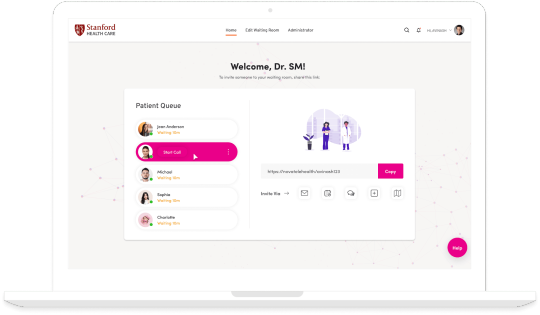
Image
Flexible scaling: White label platforms, suitable for telemedicine app development, easily scale as your user base grows.
Latest features: Leverage innovations like AI diagnosis and asynchronous messaging.
Regulatory compliance: Established platforms ensure compliance with healthcare regulations.
Proven technology: Avoid technology risks and glitches of untested software..
6 Critical Factors to Consider in a White Label Telehealth Partner
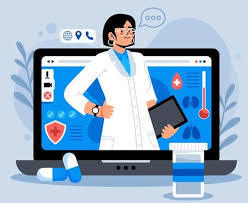
Image
With many vendors offering white label telehealth software solutions, how do you select the right partner for your telemedicine apps?
Here are key factors to consider:
1. Proven Experience and Expertise
Partner with an established telehealth vendor with many years of experience, not a new entrant. Look for proven success delivering similar large-scale implementations in your industry.
Ask for case studies and client references to verify capabilities. Seek out partners who stay ahead of evolving regulations and guidelines.
2. Flexible Business and Pricing Models
Avoid vendors who lock you into long, rigid contracts. Look for partners offering customized options that meet your budget and scale as your program grows. Month-to-month fees, revenue sharing models, and usage-based pricing give you flexibility.
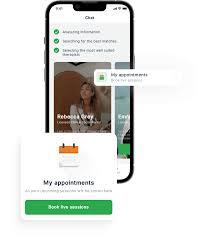
Image
3. Robust and Configurable Technology Platform
Assess the provider's technology stack and architecture. Key elements include:
- Native mobile apps for omni-channel access, crucial for telemedicine app development
- APIs for easy integration with EHRs and internal tools
- Configurable clinical workflows
- AI capabilities like automated triage and health risk assessments
- Analytics dashboards and custom reporting
Prioritize scalable platforms that give you control to tailor experiences.
4. Extensive Practitioner Network and Staffing Models
Having on-demand access to licensed, credentialed clinicians is a must. Verify the provider has a nationwide practitioner network across primary care, behavioral health, and specialties. Also confirm they support leveraging your own employed doctors.
5. Medical Operations and Compliance
A partner handling the medical side is critical for speed. Ensure they provide intake processing, eligibility checking, documentation and other operational support. Rigorously vet their protocols for clinician vetting, licensing, credentialing and training.

Image
6. Implementation Support and Post-Launch Partnership
The right partner doesn't just hand off software and leave. Look for dedicated support for change management, rollout, training and optimization. Conduct user acceptance testing before launch. After launch, seek ongoing enhancements, new feature releases, quarterly business reviews, and 24/7 technical assistance.
Now that we've covered the partner evaluation criteria, let's explore the technical capabilities your platform should deliver.
Must-Have Features in a Robust Telehealth Platform for Telemedicine Apps
The telehealth solution should provide a stellar experience for providers and patients, especially for telemedicine apps. These features are vital:
Key Video Visit Capabilities
Telehealth Platform Remote Monitoring Features
HD video resolution (720p+)
Connectivity for Bluetooth peripherals (scales, BP monitors, glucose meters)
Screen sharing
Custom surveys and chronicle care management prompts
Remote camera control
Automated health metric data analysis and trend identification
HIPAA-compliant infrastructure
Patient engagement tools (reminders, education, chat)
For Patients
- Intuitive mobile app for on-the-go access
- Secure video consultations with screen sharing
- Remote patient monitoring with connected devices
- Asynchronous messaging for non-urgent inquiries
- Prescription management and integration with pharmacies
- Payment and billing management
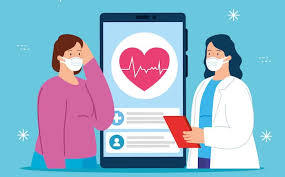
Image
For Providers
- Provider mobile app and web portal
- Tools to manage patient appointments and records
- Telehealth workflow directly integrated with EHR
- ePrescribing and prescription tracking
- Secure video calls with remote diagnostic tools
- Asynchronous messaging threads with patients
- Referrals management and transitions of care
Administrative Features
- Performance dashboards and analytics
- Custom reporting on utilization and outcomes
- Patient management tools
- Configurable settings for providers, services, locations
- Robust data security and access controls
- HIPAA-compliant messaging and infrastructure
- Integrations with billing, claims, and EHR systems

Image
Implementation and Support
- Quick onboarding and training
- Technical and clinical support teams
- Ongoing platform enhancements and feature releases
- User acceptance testing and change management
- Custom integrations with internal systems
- Scalable infrastructure and backups
FAQs on White Label Telehealth Solutions
Can we integrate a white label telehealth platform with our EHR?
Yes, reputed providers enable easy integration with EHRs via APIs and HL7 interconnectivity. This allows a seamless workflow for telemedicine app development.
How long does implementing a white label telehealth solution take?
With an experienced partner, you can launch a branded telehealth service in 4-6 weeks. The vendor handles technical setup while you focus on change management and marketing for your telemedicine applications.
What telehealth trends are shaping the industry in 2023?
Top telehealth trends include greater chronic care management, expansion into mental health services, integration with in-person care, and enterprise-grade capabilities like automation and analytics.
These trends significantly improve the landscape of telemedicine app development.
How does telehealth benefit healthcare organizations?
Key benefits include increased patient access, reduced costs through avoided emergency department visits, improved outcomes and patient satisfaction, expanded revenue with new virtual care services, and optimized clinician workflows for telemedicine apps.
What telehealth modalities are available?
Platforms offer live video consultations, remote patient monitoring with connected devices, asynchronous messaging, e-prescription management, mental health therapy, nutrition services, and more for comprehensive telemedicine app development.
Conclusion
Telemedicine app development industry is transforming healthcare access and delivery. White label solutions allow even small to mid-sized healthcare organizations to quickly deploy telehealth software solutions at scale. The key is choosing an experienced technology partner that provides a robust and customizable platform.
If you're looking for a proven telehealth app development provider, connect with Consagous Technologies, a leading telemedicine app development company. With over a decade of experience delivering custom healthcare software and mobile apps, Consagous is a leading innovator in white label telehealth solutions. Schedule a free demo to learn more about their HIPAA-compliant platform, flexible business models, and successful client deployments.
You can rapidly launch telehealth under your brand backed by cutting-edge technology and stellar support. Contact to get started!
0 notes
Text
Build Telehealth App like Teladoc (White Label, Clone, Custom)
Building a telehealth app Teladoc Clone that offers various approaches: White Label, Clone, and Custom development. A White Label solution involves rebranding an existing app with minor modifications, providing a quick-to-market option for healthcare providers. Cloning Teladoc replicates its functionalities but may lead to copyright and ethical issues.
For a tailored experience, Custom development proves ideal, permitting personalized features, scalability, and security measures. Incorporating essential components like video conferencing, patient data storage, and secure payment gateways ensures compliance with healthcare regulations.
The path chosen must prioritize user-friendly interfaces, HIPAA compliance, and robust backend infrastructure to deliver seamless and efficient telehealth services.
0 notes
Text

The benefits and features of telemedicine software for providers, focusing on the telehealth solutions available for providers, including white-label telemedicine options, virtual doctor apps, and the role of telemedicine software companies in shaping the future of healthcare delivery.
0 notes
Text
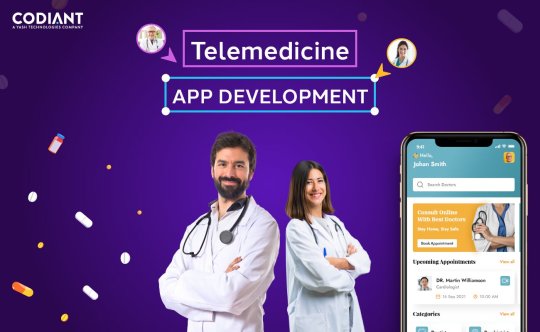
Teledocto- Market ready Telehealth app for doctors with specific features
Teledocto is a white labelled mobile app which can customized easily according to your business need of telemedicine services. It has in-build features of online scheduling file and screen sharing, remote monitoring. Let us help you with your ideas!!
#telemedicine app development services#telemedicine app development#telemedicine software development#telemedicine app development company#telehealth app development#telehealth app development company#hire telemedicine app developers
0 notes
Text
US: The HSCC has published recommendations on managing legacy medical technology security

- By InnoNurse Staff -
The Healthcare and Public Health Sector Coordinating Council (HSCC) Cybersecurity Working Group (CWG) has released its "Health Industry Cybersecurity - Managing Legacy Technology Security (HIC-MaLTS)" guidance, which is intended to assist medical device manufacturers (MDMs) and healthcare organizations in managing legacy medical technology security risks.
Read more at HealthITSecurity
///
Other recent news and insights
Google announces new AI collaborations and the Open Health Stack for app developers (Fierce Healthcare)
India's HealthPlix raises $22 million to accelerate expansion and improve healthcare delivery (TechCrunch)
OpenLoop receives $15M for white-label telehealth support (HIT Consultant)
Science, a rival of Neuralink, has launched a new platform to expedite medical device innovation (CNBC)
#health it#cybersecurity#security#medical devices#google#ai#artificial intelligence#computing#big tech#healthplix#emr#ehr#electronic health records#india#openloop#telehealth#telemedicine#health tech#medtech#digital health#usa
0 notes
Photo

Get an all-in-one telemedicine application for healthcare services that help in widening your business without trimming the range of your pocket and budget for the project at SISGAIN. Our top-notch team of telemedicine developers provides an exclusive white-label telemedicine software development platform solutions for telehealth systems, Mhealth and telemedicine applications, telemedicine app development solutions platform integrations, remote patient monitoring systems, and AI based chat. Our telemedicine video-conferencing application consists of photo-based consultations, real-time communications, online-appointment scheduling, patient & doctor dashboard, video session recording. We have implemented the most effective data collection and privacy standards within the cutting-edge advanced platform along with the cloud-based telemedicine application development. We deliver telemedicine services and solutions that target the patients to be treated in-person and with maximum value. For more information call us at +18444455767 or visit https://sisgain.com/telemedicine
#telemedicine applications for healthcare#telemedicine software development company#telemedicine applications
1 note
·
View note
Photo

Develop a Feature-rich Telemedicine for eHealthcare with EMed HealthTech
Our feature-packed yet cost-effective Telemedicine app provides a bug-free and smooth user experience across all platforms, whether it is Android, iOS, or the Website. EMedStore provides easy-to-implement white-label solutions for Telemedicine platform development. And it is scalable and customizable as per the users’ needs. Kindly request a free demo of Feature-rich Telemedicine app at EMedStore.
To know about Telemedicine refer this guide:
https://www.emedstore.in/blog/Post/telemedicine-app-development-guide-trends-challenges-benefits-features-/226
#telehealth #PatientApp #HospitalApp #app #solutions #Healthcare #Nigeria #Kenya #SouthAfrica #Sudan #Zambia #UAE #Nepal #SouthAfrica #Ghana #Uganda #SriLanka #Philippines #emedhealthtech #digitalhealth #digitalhealthcare #doctorapp #patient #doctor #health #healthcareIT #telemedicine #epharmacy #medicinedelivery #onlinepharmacy #Integration #labapplication #b2bpharmacy
0 notes